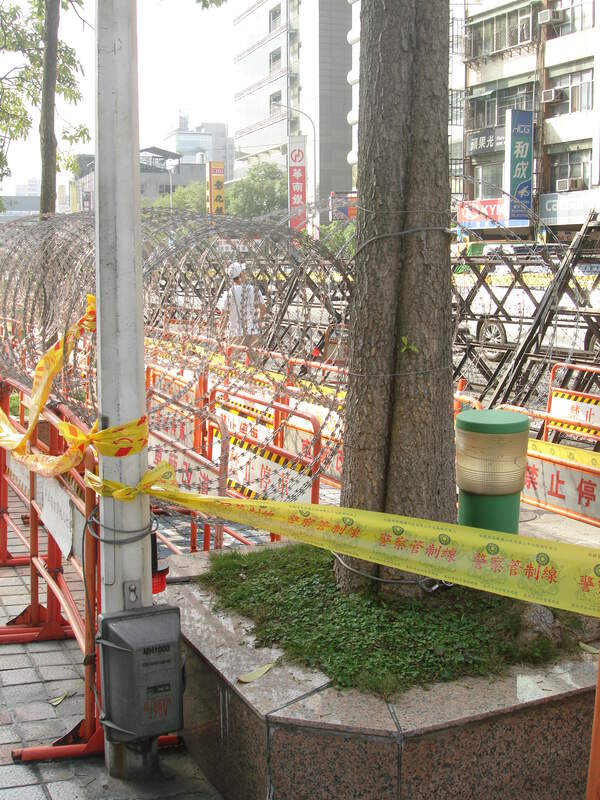啊哈~連作者本人根本都都沒有背的事情,讀者們更是不需要背! 在每張寫真底下列出「主要EXIF」資訊,本來就是初學者用書的基本,日文書基本上都是這樣製作,最後也會列出「50音索引」。但國外的書通常就沒那麼嚴謹,不是沒列出EXIF,就是連「索引」都沒有。
在每張寫真底下列出「主要EXIF」資訊,本來就是初學者用書的基本,日文書基本上都是這樣製作,最後也會列出「50音索引」。但國外的書通常就沒那麼嚴謹,不是沒列出EXIF,就是連「索引」都沒有。
阿光我只是按照日本傳統的寫真書的製作方式來寫作而已。
標示出來的目度不是希望讀者把那些拍攝參數背起來,而是讓讀者們理解,在拍攝那張寫真時候,現場的光線明暗度如何?作者當時又是採用「大光圈」來拍?還是使用低速快門來拍?甚至光線昏暗到只能「用三腳架」來拍?
我提到的「防手震」(以前都稱為「相片模糊警告」,因為30幾年前當年還沒有人發明防手震這種功能 ),可以在這本「Nikon F-601 AF Instruction Manual」使用手冊裡面找到:
),可以在這本「Nikon F-601 AF Instruction Manual」使用手冊裡面找到:
http://www.cameramanuals.org/nikon_pdf/nikon_f-601_af.pdf
也可以直接看一下線上的版本,只是網路版有很討厭的浮水印,而且掃描品質也很差!
http://www.manualslib.com/manual/554524/Nikon-F-601.html?page=55#manual
APERTURE-PRIORITY AUTO EXPOSURE MODE
Select the aperture based on how shallow or large you want depth of field to be. Smaller apertures will make the background and foreground sharper (good for scenic pictures) while larger apertures will produce a shallower depth of field (good for portraits). Your selected aperture will determine the shutter speed which is automatically set by the camera's computer. When using the smaller apertures with corresponding slower shutter speeds, remember as a rule of thumb that any speed below 1/30 sec. may require the use of a tripod to prevent picture blur due to camera shake. Also, the higher the corresponding shutter speed, the easier it is to stop action. Adjust the selected aperture if the speed is not appropriate for conditions or the specific effect you want.
あなたは被写界深度がしたいどのように浅いまたは大規模に基づいて絞りを選択します。大きな開口部は、フィールドの浅い深度(肖像画のために良い)を生成する一方小さい開口は、背景と前景がシャープ(風光明媚な写真のために良い)を作成します。あなたの選択された開口部は、自動的にカメラのコンピュータで設定されているシャッタースピードを決定します。遅いシャッター速度を対応するより小さな開口部を使用する場合は、親指任意の速度以下に1/30秒のルールとして覚えている。手ぶれによる画像のブレを防ぐために三脚を使用する必要があります。また、対応するシャッタースピードが高い、容易にそれは行動を停止することです。速度は条件や希望する特定の効果のために適切でない場合は、選択開口部を調整します。
根據你想如何淺或大景深是選擇光圈。較小的光圈會使背景和前景更清晰(好風景圖片),而更大的光圈會產生一個較淺的景深(適用於人像攝影)。您選擇的光圈將決定它是由相機的電腦自動設定快門速度。當使用較小的光圈相應較慢的快門速度,記得拇指,任何速度低於1/30秒的規則。可能需要使用三腳架,以防止圖像模糊由於相機抖動。此外,更高的對應的快門速度,越容易停止動作。調整所選光圈如果速度是不適合的條件,或你想要的具體效果。
http://www.manualslib.com/manual/554524/Nikon-F-601.html?page=58#manual
If shutter speed indicator blinks - Picture blur alert:
A shutter speed of 1/FL is generally accepted as the minimum speed for hand-held photography, but since not everyone can hold a camera equally steady, this is just a guideline, The blinking shutter speed indication warns you that the exposure conditions call for a speed of 1/FL or slower, For example, with a 200mm lens, shutter speed indication blinks when automatically selected speed is 1/200 sec, or slower. Make adjustments to shutter/aperture if that speed is inappropriate for the picture conditions.
1/ FLのシャッタースピードは、一般的に、手持ち撮影のための最低速度として受け入れではなく、誰もが平等にカメラをしっかり保持することができるので、これが点滅してシャッタースピード表示は、露光条件が要求することを警告し、単にガイドラインです自動的に選択された速度は1/200秒、またはそれより遅い場合に200ミリメートルレンズを例えば1/ FLまたはより遅い速度は、シャッタースピード表示が点滅。その速度は、画像条件に不適切な場合調整が/開口部をシャッターに加えた。
1/ FL的快門速度被普遍接受的最低速度手持拍攝,但因為不是每個人都可以裝一個攝像頭同樣穩定的,這只是一個指引,閃爍的快門速度指示警告你,曝光條件要求1/ FL或更慢的速度,例如,具有一個200mm鏡頭,快門速度指示閃爍時自動選擇的速度是1/200秒,或更慢。進行調整,快門/光圈如果該速度是不適當的圖像的條件。
Google用「英文」翻譯出來的「中国語」可說是相當的可笑!我看就連黑心國自己都看不懂!
The Nikon F-601, otherwise known as the Nikon N6006, is a 35mm single-lens reflex (SLR) film camera that was produced by Nikon starting in 1991.The F601 featured an improved second-generation autofocus system, motor drive for automatic film advance, a built-in pop-up electronic flash, a top shutter speed of 1/2000 of a second, and a new "Matrix" evaluative multi-zone metering program.
The camera includes an integrated motor drive and is also available in a version with a date back, which could be set to print the date and time on the photo film as images were acquired. As a kit, the F601 shipped with a 35-to-70 mm autofocus Nikkor zoom lens. It is compatible with a wide range of Nikon F-mount lenses, including both autofocus and manual focus types.
During the 1990s, the F-601 sat between the Nikon F-401 and Nikon F-801s in the company's consumer SLR range.
現在の社名「ニコン(Nikon)」は、元は、戦後に参入した35mmフィルムカメラの商品名ないしブランド名である(ニコンのレンジファインダーカメラ製品一覧#ニコンSシリーズを参照。後続のモデルとの区別のため現代では「ニコンI型」と言われることが多い)。アメリカでは「ナイコン」と発音されているが、他では「ニコン」の発音が主流である。
1946年(昭和21年) - 35mmカメラの名を「ニコン」(Nikon)と決定。後にブランド名となる。
Nikon從1946年開始製造SLR相機,到了1992年發表Nikon F-601為止,已經累積了將近50年的製造經驗,當然也會知道根據經驗法則,大概是在什麼樣的情況下,無論是誰都很容易拍出「手震模糊的寫真」也因此會把經驗法則寫在「使用手冊」裡面來提醒攝影者。
但是隨著時代改變,這個恆久不變的經驗法則,已經沒有寫在現代的數位相機手冊裡面了! 除了現代已經有「防手震」技術以外,「APS-C」等不同片幅換算結果也不同,所以才沒有寫吧?
除了現代已經有「防手震」技術以外,「APS-C」等不同片幅換算結果也不同,所以才沒有寫吧?
![]()

